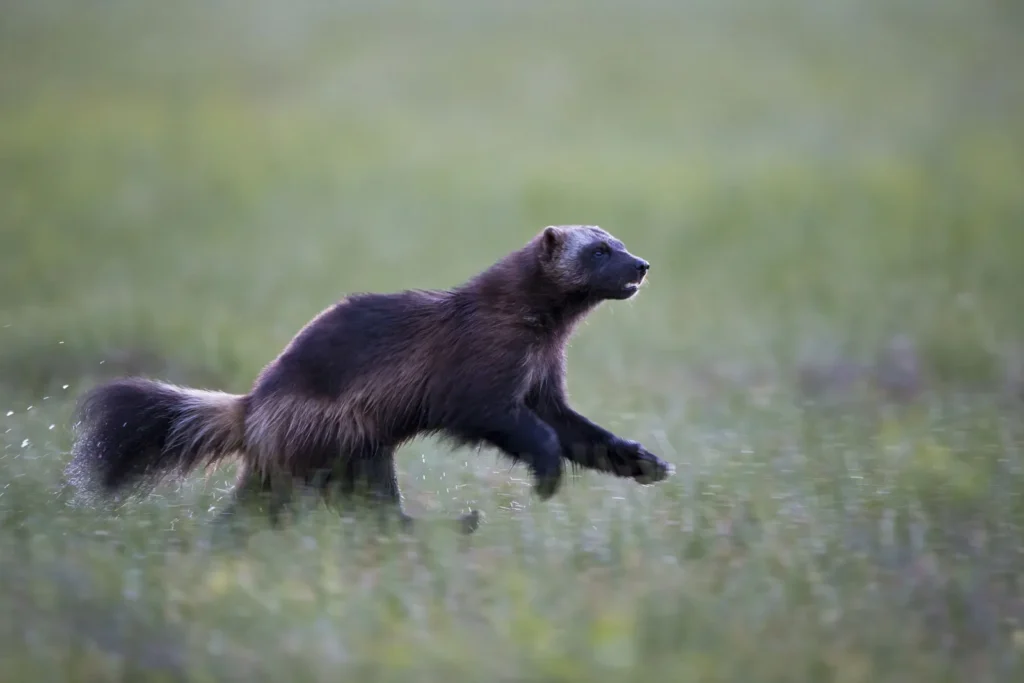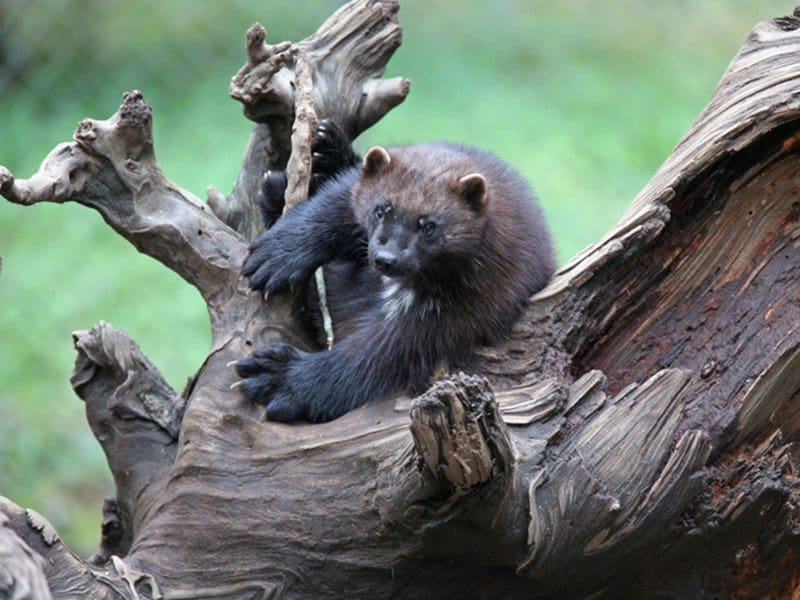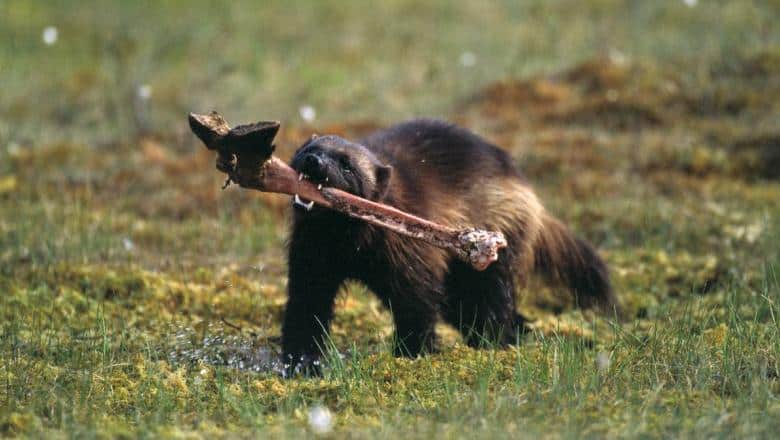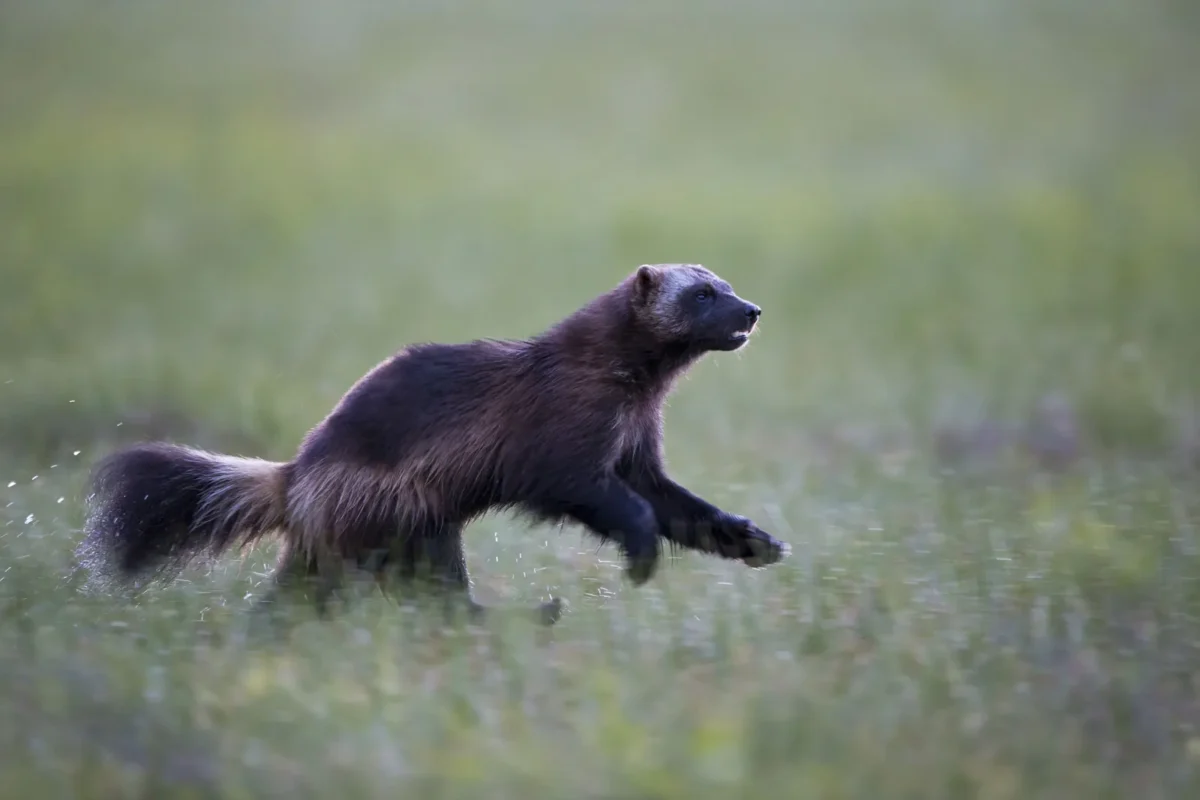By Courtney King

Discussion surrounding the initiative to reintroduce wolves to Colorado — which was passed nearly two years ago, has recently regained dominance (as if it ever really left) among conservationists, natural resource managers, and the ranching community.
Related to the gray wolf’s relisting as an endangered species this past February, and to concerns over who (the feds or the state) would ultimately be responsible for both the reintroduction and later management of this species, Colorado Parks and Wildlife requested that the U.S. Fish and Wildlife Service (USFWS) consider designating the reintroduced population as experimental.
To evaluate this request, the federal agency was compelled to develop an Environmental Impact Statement (EIS), which comes with additional requirements for a public review period. Comments could be submitted online until Aug. 22, and could also be provided at public meetings such as the one held in Gunnison on Aug. 2.
This meeting was held at the Gunnison County Fairgrounds, just weeks after the same venue hosted Cattlemen’s Days. Clearly, the USFWS expected to collect lots of comments from communities like ours with long ranching traditions — and likely concerns over wolf predation.
Without trampling too far into the unceasing debates surrounding wolf reintroduction, an interesting aspect of the initiative is that it seems to have allowed for consideration of bringing back another historically native species: the wolverine.
Wolverines have attracted far less negative attention than wolves – they are known for being solitary, generally scavenge for their food rather than directly killing prey (so they are, in theory, less likely to kill livestock), and are even more obscure than the elusive gray wolf.

They are also much rarer — with less than 400 individuals estimated in the contiguous United States. While they were believed to be once found along the border with Canada, in the Sierra Nevada, and throughout the Rocky Mountains, their current range is now largely constricted to Canada and Alaska, with only small pockets remaining in the northern Rockies and Cascades.
Because the wolverine is seemingly less controversial than their canine counterparts, but arguably more imperiled, it seems surprising that wolverine reintroduction is only just now being strongly considered.
This could be related to the fact that while wolves have been painted as villains by many, others have framed them as apex predators with the power to alter entire landscapes — as extolled in the frequently referenced, potentially overblown How Wolves Change Rivers video.
In the style of TEDTalks — inspiring plenty of confidence but touching on topics subject to further debate — how far these claims can actually go has been documented in back-and-forth journal articles in which snark is conveyed through dense scientific jargon.
Wolverines, on the other hand, lack a compelling success story — a reason to spur their introduction into being. They may even be perceived more like a mythical creature than a real, persisting species in need of great conservation efforts to ensure their survival.
Most non-wildlife professionals have never seen a wolverine, let alone a depiction of one, apart from the Marvel character or (in Gunnison) the logo of the local hockey team. Yet, the species’ champions have drawn encouragement from the passing of the wolf initiative, and have revitalized plans drawn up more than a decade ago.

I myself became acquainted with the wolverine only a few years ago, and solely through others’ images and accounts. Even dedicated researchers are more likely to “encounter” individuals through snow tracks and motion-triggered cameras than to actually see or handle a wolverine themselves.
I had been reading literature focused on Canada lynx, and realized that many lynx researchers seemed to be just as interested in wolverines. This made sense as the two species similarly thrive in high-elevation forests, are well adapted to traveling through deep snow and, at least as of a few decades ago, had similar population numbers in Colorado and the continental U.S.
That is, until an extensive effort was carried out from the late 90’s-early 00’s to reintroduce lynx to Colorado. The program is now considered successful, with all benchmarks for success met by 2010, around the same time plans for wolverine reintroduction were first developed.
The initial stages of lynx reintroduction were heavily criticized, however, and the program was even temporarily suspended after some of the first individuals released had starved to death.
While the lynx reintroduction program was modified — notably to include an “incubation” period to ensure cats bred for release could survive in the wild, many of the early concerns with that effort could be raised with wolverines as well.
Wolverines require habitat that has already been greatly disturbed, through development at a small scale to climate change at a larger-scale, in ecosystems which will continue to diminish as snow melts and forests burn.

Does it make sense to aid them in recovery when the resources required by this species, adapted to deep snow and dense forests, are disappearing and all signs point to worsening conditions?
Moving beyond specific concerns and species, one could delve into a rabbit hole (or a “hare hole,” in keeping with one of these predator species’ main sources of food) in considering whether these mammalian reintroductions are justified, and why conservationists seem so interested in them in the first place. As with anger over reintroduction, promotion of the practice seems to be just as focused on human desires and hubris as the animals themselves.
The field of wildlife management is concerned with just that – management, or manipulation of the populations and habitats of — animals. It’s no surprise that many in the field are hunters and anglers, hobbies involving chasing and taking the lives of animals while rooting for their species’ continued survival.
Of course, wildlife biologists tend to be a well-meaning bunch interested in conserving the species they care for, but the desire to protect can seem only a short hop away from a full-fledged savior complex.
Certain efforts characterized as wildlife conservation, but which verge on the non-synonymous field of wildlife rehabilitation, are so individual-focused that their consequences for overall populations are negligible.
For example, Colorado Parks and Wildlife has been urged by the public to feed deer during tough winters — providing aid to those individuals who have learned that living in town can be more profitable than acclimating to more “natural” conditions.
Similarly, direct contact with animals can allow wildlife professionals to more easily see the consequences of their actions. Having the chance to see and perhaps hold animals in the wild can be a highlight of one’s career — not necessarily any better in terms of knowledge gained or impact had, but likely more life-changing than counting scat or identifying tracks.

Handling animals, however, can easily become dangerous for all involved. The first lesson of capturing, restraining, and otherwise handling animals is that doing so can result in altered behaviors, injury, and death.
In what was surely an accident, but also shouldn’t have been a surprise, I witnessed an elk die while participating in a course designed to teach students and professionals how to safely restrain animals.
Before handling wildlife, researchers and managers are required to evaluate potential plans and only move forward with invasive methods when the benefits fully outweigh the risks. Certainly, as the field has changed, modernized, and become more regulated, wildlife professionals must pay even greater cognizance towards justifying their actions.
Nonetheless, a degree of cognitive dissonance may remain, in which managers don’t allow themselves to fully consider how their plans could cause undue harm, or otherwise overinflate the information to be gained from actions that require contact such as taking blood samples and body measurements. Even those projects deemed necessary may be carried out because it’s “always been done that way,” or just because a biologist wants to undertake a given project.
As mentioned above, many wildlife professionals enter the field because of what they enjoy outside of work — that can range from consumptive uses, to wildlife photography, to simply wanting to spend time outside.
Going back to the idea of cognitive dissonance, seeing oneself as doing important work also influences one’s mentality surrounding actions which they wouldn’t otherwise feel comfortable undertaking.
I’ve spent time speaking about and closing off user-created trails, and months later followed game paths and bushwhacked through the wilderness to collect data, perhaps trampling fragile plants and soils on the way.
Vegetarians in the field who wouldn’t otherwise be comfortable with killing animals may spear lionfish, trap nutria, or exterminate any other species that we’ve determined to be an invasive pest. Those who believe in the concept of fair chase fly in aircraft, aiming their snipers towards feral hogs.
Actions including these are not necessarily unjustified, but can feel gratuitous with wildlifers feeling like they “get” to do what they want due to their training and experience. Wildlife reintroductions serve to amplify a desire to help driven by ego, and other mentalities rife within the field.
This amplification effect comes into play to such a great degree because these are great actions — huge projects requiring large efforts, commanding large amounts of respect and, hopefully, resulting in future acclaim as conservation success stories.
Of course, compared to species that are “doing well,” it’s much more obvious to root for efforts that support the conservation of species who might otherwise face extinction without human interaction.
It’s also important to ask whether such enormous efforts will even matter — when humans could be blamed for their declines to begin with, and in cases like the wolverine, where habitats are declining to a degree that recovery becomes increasingly unlikely.
Flashy reintroduction projects could seem just so, with efforts begun but results dissolved in a flash, but fortunately lessons have been learned from the past. Efforts around the Canada lynx from decades ago might inform how to reintroduce wolverines under a changing climate.
Wolf reintroduction can show how even controversial work can be moved forward, and other projects such as the reintroductions of fishers and martens to the Pacific Northwest region have proven to be strong examples of collaboration and bringing together modern techniques with indigenous stewardship.
How wolverine reintroduction effort will be perceived by Coloradans in the field and in the public is unclear. Also unclear is how the effort will be carried out on the ground, and whether it is likely to prove ultimately successful.
Interestingly, individuals from this species have recently been spotted in areas where they are extremely rare, perhaps even thought to be extirpated (locally extinct).
Perhaps in due time a skier will come across a wolverine and the question to answer will be whether that proves reintroduction was successful, or whether the intrepid individual made it the journey on its own, without any help from us proud people.

